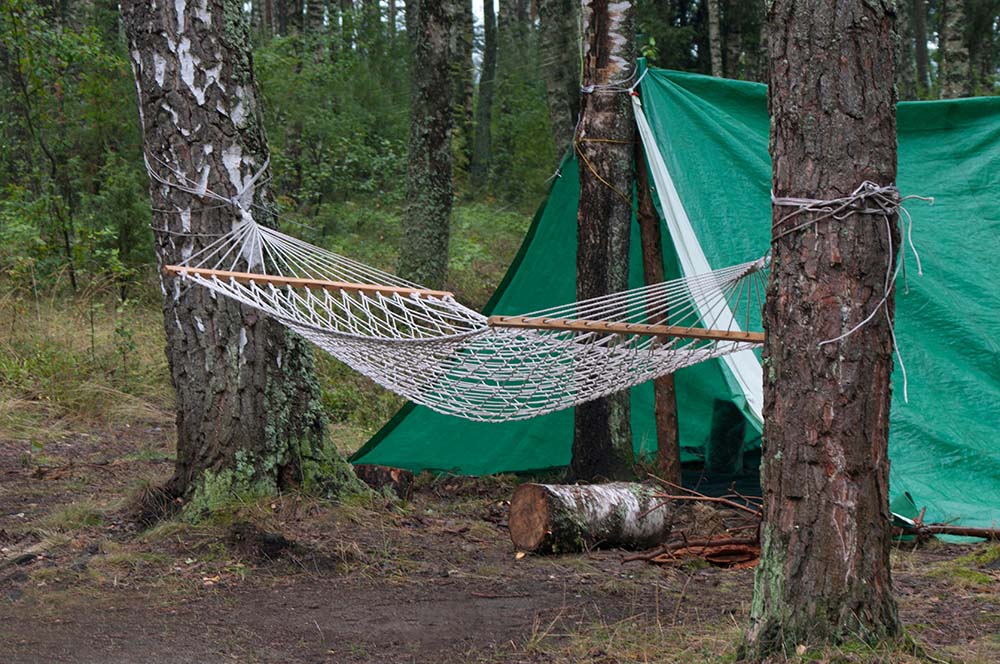
Tarp camping refers to a style of camping where a tarpaulin, or tarp for short, is used as the primary shelter or as an additional shelter alongside a tent or hammock. Instead of relying solely on a traditional tent for protection from the elements, tarp campers utilize a tarp to create a versatile and lightweight shelter.
What are the advantages of tarp camping?
Tarp camping offers several advantages. Firstly, tarps are typically lighter and more compact than tents, making them easier to carry and pack. They also provide more flexibility in terms of setup, allowing campers to adapt their shelter to different terrains and weather conditions. Tarps can be set up in various configurations, such as a simple A-frame, lean-to, or even as a makeshift tent using poles, trees, or trekking poles as support.
Another benefit of tarp camping is increased ventilation. Unlike traditional tents, which can sometimes trap heat and moisture, tarps allow for better airflow, reducing condensation and improving comfort. Additionally, tarps provide a greater sense of immersion in nature, as they offer unobstructed views of the surroundings, enabling campers to fully appreciate their natural surroundings.
What are the disadvantages of tarp camping?
However, tarp camping also has its challenges. Since tarps offer less protection from wind, rain, and bugs compared to a fully enclosed tent, campers must choose suitable locations and set up their tarps properly to mitigate these issues. Properly staking and tensioning the tarp is important to ensure stability and prevent it from sagging or flapping in the wind.
Overall, tarp camping is a minimalist and adaptable approach to camping that appeals to those seeking a lightweight and immersive outdoor experience. It requires some knowledge and practice to master the art of tarp setup, but it can be a rewarding and enjoyable way to connect with nature.
Tarp camping FAQs
What are the essential items needed for tarp camping?
- Tarp: Choose a durable and waterproof tarp of appropriate size for your needs.
- Guy lines and cordage: These are used to secure the tarp and create tension.
- Tent stakes or pegs: They help anchor the tarp to the ground.
- Trekking poles or trees: These provide support for setting up the tarp.
- Sleeping gear: Consider a sleeping bag, pad, or hammock for comfort.
How do I choose the right tarp size for camping?
- Consider the number of campers: A tarp should be wide enough to provide coverage for everyone.
- Shelter configuration: If you plan to set up a lean-to or A-frame shelter, a larger tarp is needed.
- Weather conditions: In areas with heavy rain or strong winds, a larger tarp can provide better protection.
Can tarps protect me from bugs and insects?
- Tarps offer limited protection from bugs compared to fully enclosed tents.
- You can use bug netting or a bug bivy to create a separate space for sleeping.
- Choosing a campsite away from insect-prone areas can also help minimize bug encounters.
How do I set up a tarp for camping?
- Practice setting up your tarp before your camping trip to become familiar with different configurations.
- Use sturdy anchor points like trees, trekking poles, or rocks to secure the corners of the tarp.
- Create tension by tightening the guy lines, ensuring the tarp is properly pitched to shed water.
What are the advantages of tarp camping over using a tent?
- Lightweight and compact: Tarps are usually lighter and easier to pack than tents.
- Versatile setup: Tarps offer flexibility in various shelter configurations.
- Better airflow: Tarps provide increased ventilation and reduce condensation compared to tents.
- Immersive experience: Tarps allow unobstructed views of the surroundings, enhancing the connection with nature.
- Remember, practicing and gaining experience with tarp camping techniques will help you become more proficient and comfortable with this style of camping.




